Video of the Week:
Indoor Palms
Upcoming Events:
December 1, 2 & 3, 2015
Kansas Expocentre, Topeka
The 65th Annual Kansas Turfgrass Conference in conjunction with KNLA will be held December
1, 2 & 3 at the Kansas Expocentre in Topeka. The conference is an excellent way to learn about turf, nursery and landscape management, visit with old friends, network with new ones, and see all the latest and greatest equipment and supplies from local and national vendors.
The conference has been approved for Commercial pesticide recertification hours:
1 Core hour
3A - 9.5 hours
3B - 9.5 hours
International Society of Arboriculture CEUS and GCSAA education points will also be available by attending the conference.
For more information and to register online, go to http://www.kansasturfgrassfoundation.com/
Great Plains Growers Conference
January 7, 8 & 9, 2016
St. Joseph, MO
RetailWorks
February 4, 2016
Manhattan, KS
Flowers:
Fall Care of Peonies
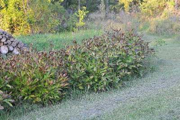
Winter protection of herbaceous peonies is only necessary the first winter after planting to prevent alternate freezing and thawing from lifting plants out of the soil. A couple of inches of mulch should be sufficient. Any organic material that does not mat down will work and should be applied after the ground freezes. Avoid using leaves that will mat together. Remove the covering before growth begins in the spring.
The less common tree peonies have woody stems like deciduous shrubs and should not be cut back to the ground or pruned in the fall. Collect the shed leaves and place in the compost pile this fall. Though tree peonies are hardy to Zone 4, they do benefit from a light mulching over winter. Also, it is recommended that tree peonies be fertilized during November to get the plants off to a good start next spring. It is best to take a soil test to see what nutrients are needed. If the soil needs phosphorus and potassium, use a complete fertilizer (such as 10-10-10, 9-9-6, etc.) at the rate of 2.5 pounds per 100 square feet. This would equal 1 rounded teaspoon per square foot.
If phosphorus and potassium are not needed, blood meal makes an excellent fertilizer. Apply at the rate of 2 pounds per 100 square feet or 1 teaspoon per square foot. Turf fertilizers such as a 27-3-3 or 30-3-3 also can be used but at the rate of to 1 pound per 100 square feet or 1 teaspoon per 2 square feet. (Ward Upham)
Vegetables:
Soil Prep Now for Peas Next Spring
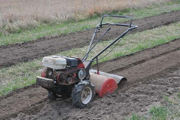
Miscellaneous:
Knotweed Control
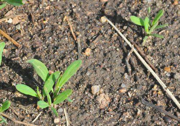
The other option is to use a combination postemergence product such as Trimec, Weed-Out, Weed-B-Gon or Weed Free Zone after the knotweed has germinated in the spring but is still young.
If spring seeding is planned, your options are more limited. Buctril can be used on commercial sites and has a very short residual. It must be used on very young knotweed to get control. Trimec and others require a month before overseeding to thicken up your lawn. Obviously, don't use a preemergence herbicide if you are trying to get new seed established. For homeowners seeding in the spring, tilling will control knotweed adequately without using a herbicide. If seeding without tilling (e.g., overseeding using a slicer-seeder), then use a combination product such as one mentioned above just after the knotweed comes up in the spring, and be sure to wait at least a month before seeding. (Ward Upham)
Begin Rabbit Protection Now
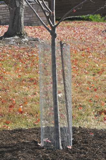
Horseradish
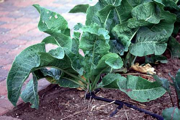
To use horseradish, peel the large, fleshy roots and cut into sections. Use a blender or food processor to chop the roots along with a small amount of water and a couple of ice cubes. Vinegar or lemon juice is added to stop the process that produces the “bite” of horseradish. Add immediately after blending for a mild flavor or wait up to 3 minutes to give the horseradish more kick. Use 2 to 3 tablespoons of vinegar or lemon juice per cup of horseradish sauce along with ½ teaspoon of salt for flavor. Horseradish has an extremely strong odor and so you may wish to open the blender or food processor outdoors and to keep your face away from the container when opening. Store ground horseradish in a tightly sealed jar in a refrigerator until ready for use. (Ward Upham)
Contributors: Ward Upham, Extension Associate



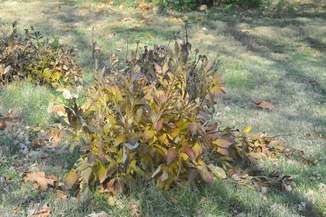
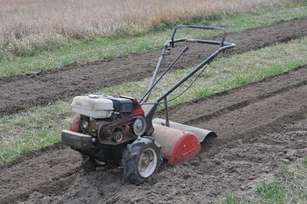
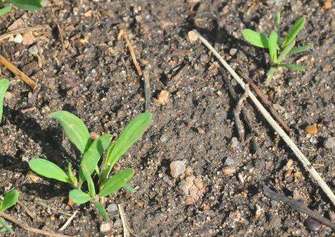
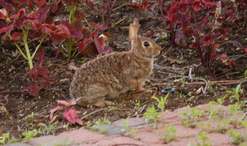
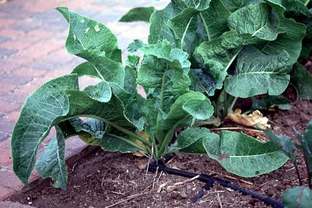
 RSS Feed
RSS Feed
